Library Journal is one of the most trusted and respected publications in the library community. Their reporting on pressing library issues and trends in the academic library world support important dialogue about the future of the library. Given VMDO’s recent library experience and our commitment to improving on it, we agreed to participate in a forum on the future of the library at the Journal’s Design Institute held in Austin, TX on October 11, 2019. The Institute brought together architects, librarians, and administrators to discuss changes in the way libraries are being funded, staffed, and used in communities around the world.
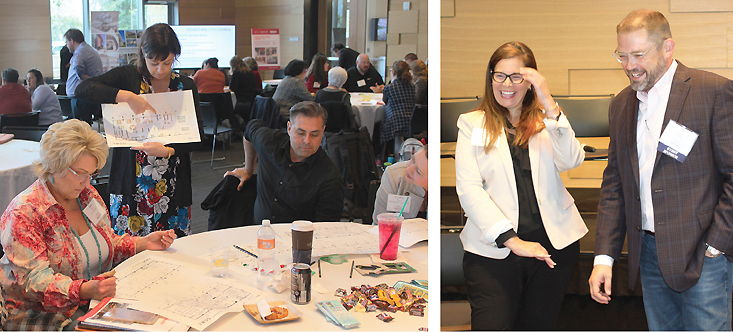
One unique aspect of the Institute is the opportunity for designers to work with institutions before and during the event to brainstorm potential design challenges and opportunities. This novel approach to structuring a conference creates a unique chance for architects to learn first-hand about the very real challenges being confronted by both public and academic libraries. VMDO was fortunate to have been paired with Jill Horrom, Library Manager of the Riverdale Branch Library in Lee County, Florida. For this growing suburban community located outside of Fort Myers, Florida, the size of the collection is limiting the usefulness of the library. In collaboration with Jill, VMDO decided to focus its efforts on improving the layout, interior design, and circulation of the library to encourage clear wayfinding and visibility while creating more useable space for library patrons.
As the VMDO/Riverdale team developed ideas about how to analyze the current conditions, we also began planning a breakout session for the Design Institute that would invite participants of the conference to help build a solution. The more perspectives shared and recommendations gathered, the better the likelihood we might discover the right answer to the Riverdale Branch Library’s challenges. Similarly, participants would hopefully return to their own libraries with a fresh take on how service is provided and might choose to make use of what they’ve learned in their own unique way.
We developed the following overview of challenges and opportunities for the library. Each of the resulting design options were synthesized into a schematic plan and axon that proposed an entirely new approach to the configuration of the library’s main floor. Riverdale Branch Library will refer to these options during future planning discussions about the future of their library.
Design Challenges
- Growing suburban community 10.5 miles from downtown Fort Meyers, FL
- Size of collection is limiting usefulness of library
- Current interior compromises openness and wayfinding
- Separate circulation and reference desks cause staffing complications and user confusion
- Few meeting/study space options
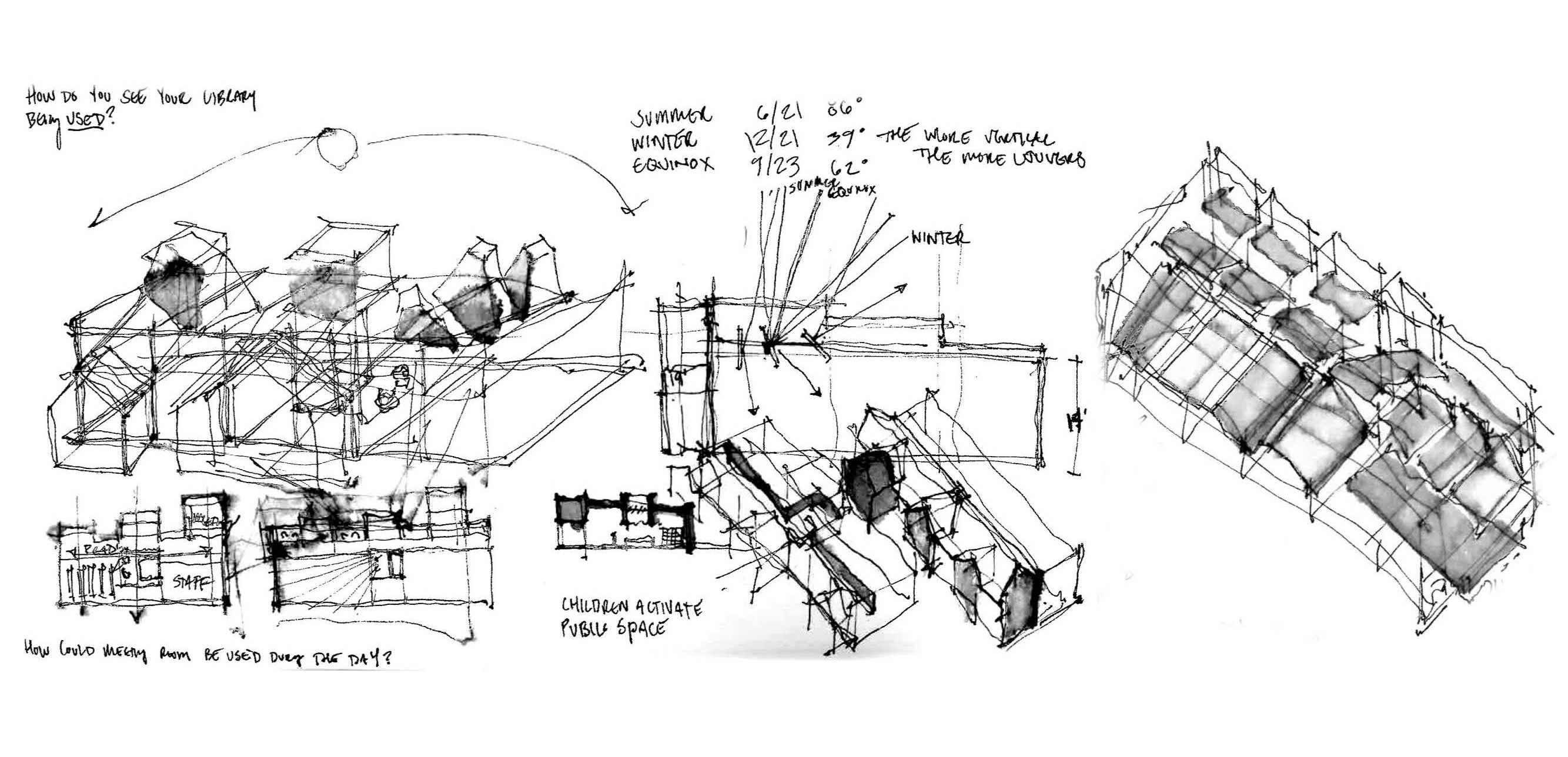 Design Option 1
Design Option 1
- Streamlined, integrated service point
- More rational layout of shelving and reading spaces
- Expanded meeting room
- Addition of a group study room
- Seating clusters along well-lit north elevation
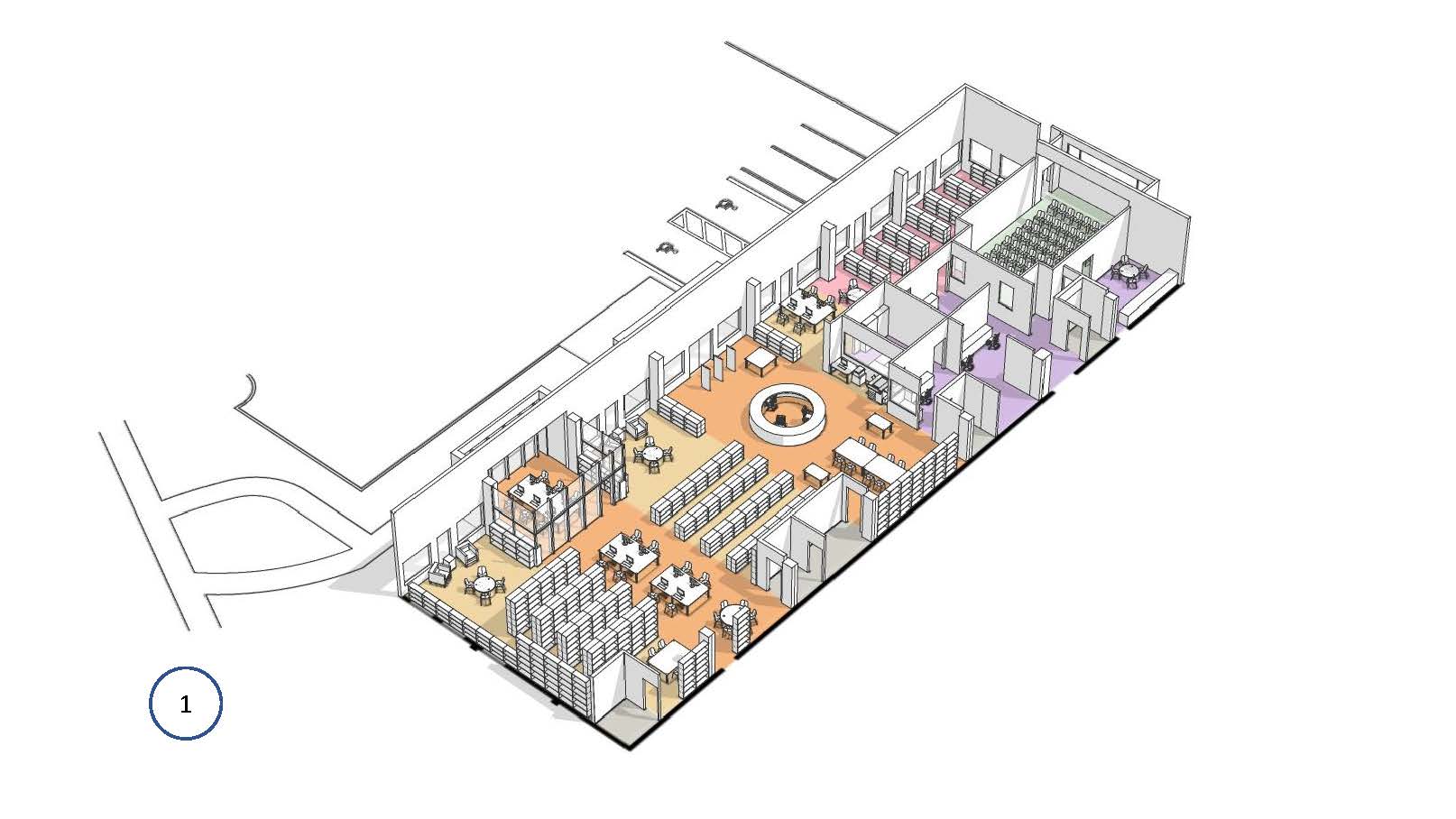
Design Option 2
- Multiple projecting bays along north elevation provides much-needed user space
- Collection organized into discreet adult, teen and children’s areas
- New help desk and lower shelving units allow for uninterrupted views across space (enhanced visibility)
- Enhanced buffer between patron restrooms and library spaces
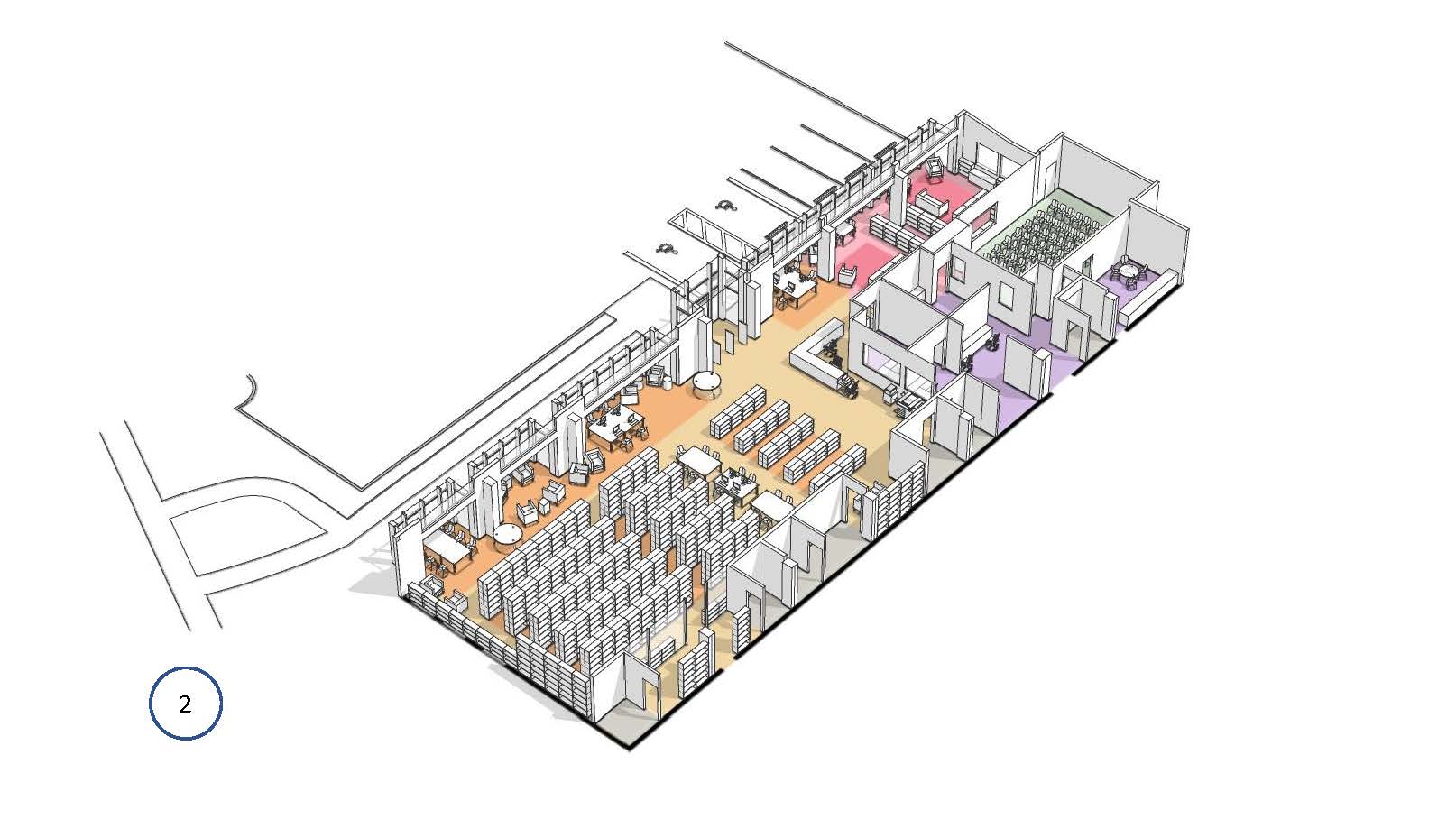
Design Option 3
- Relocated entry vestibule and adjacent garden courtyard
- Re-oriented meeting room with courtyard access via overhead garage doors
- Children’s reading zone nearest help desk supervision
- New, flexible group meeting room
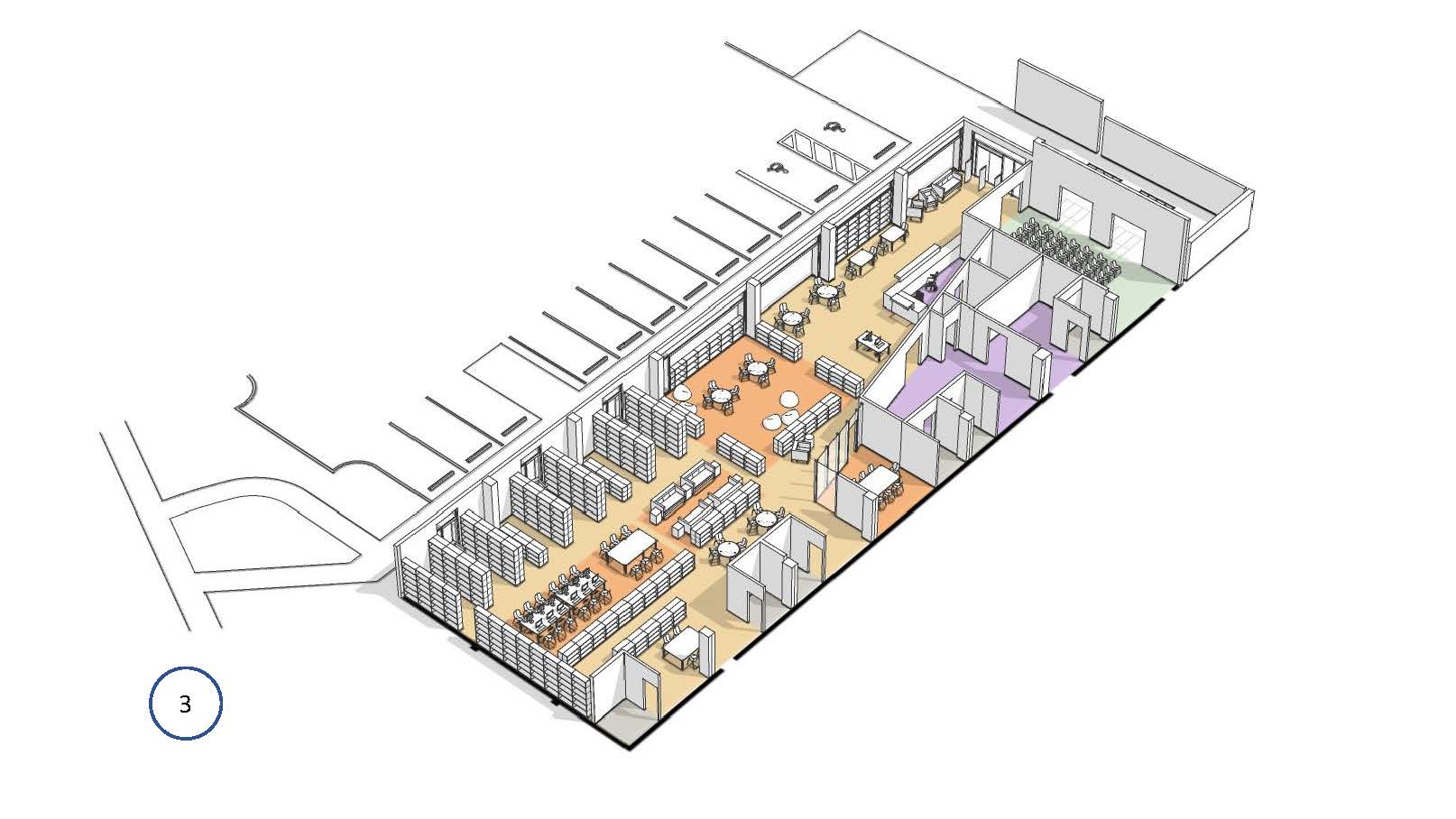
Design Option 4
- Radical reimagination of library exterior
- Entry and informal user spaces in new, organically-shaped commons
- Discreet teen and children’s spaces permit acoustic separation while allowing for visibility
- Meeting room accessible from within library and from vestibule, extending hours of operation and flexibility for community uses
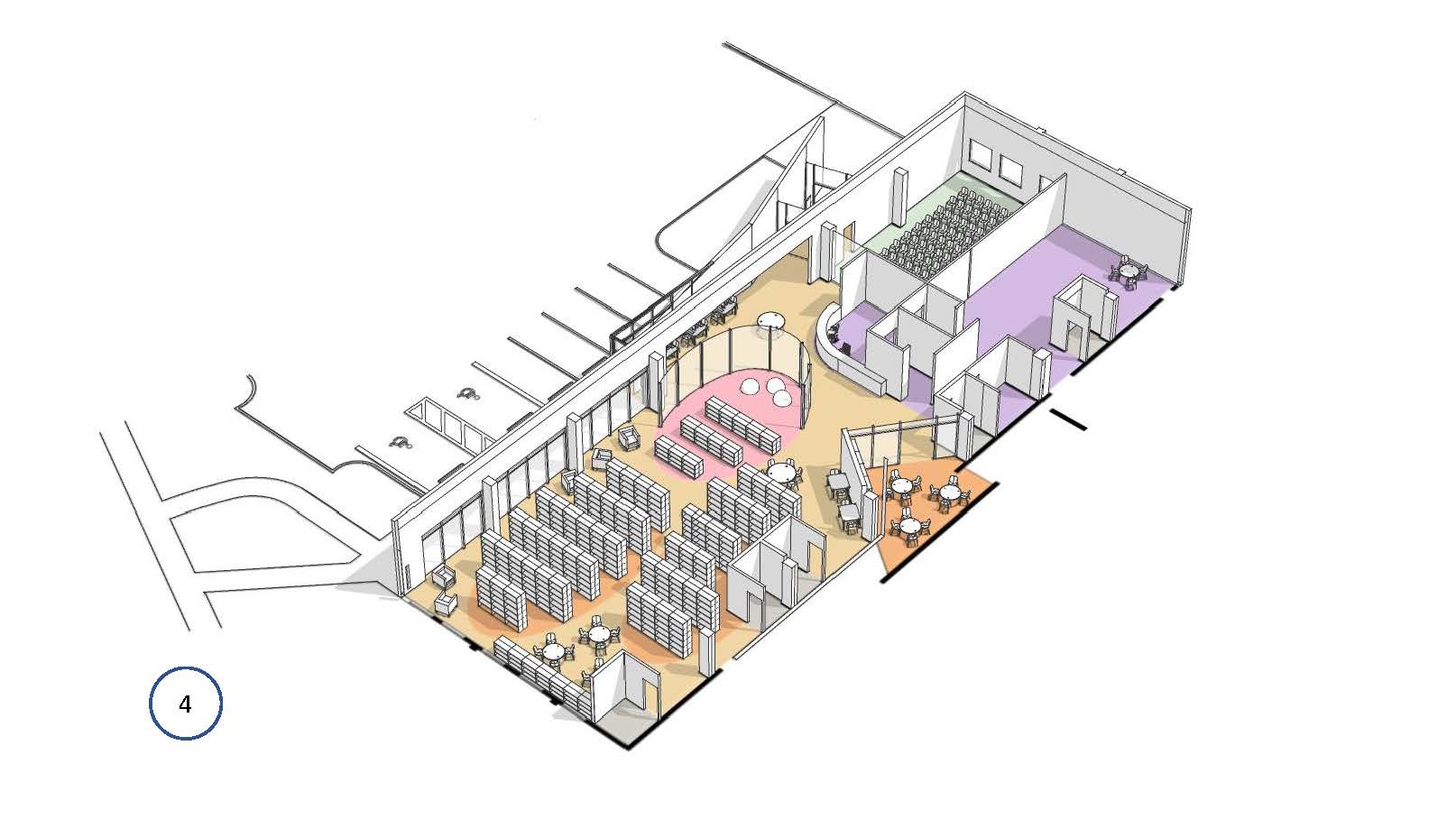
Library Journal's coverage of the Institute and design ideas for the Riverdale Branch Libray's modernization can be found here: https://www.libraryjournal.com/6-Design-Challenges-from-Austin-Design-Institute-Austinhttps://www.libraryjournal.com/Public-Properties-LJ-2019-Design-Institutes-Colorado-Springs-and-Austin
